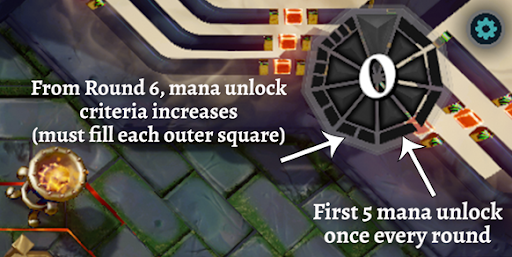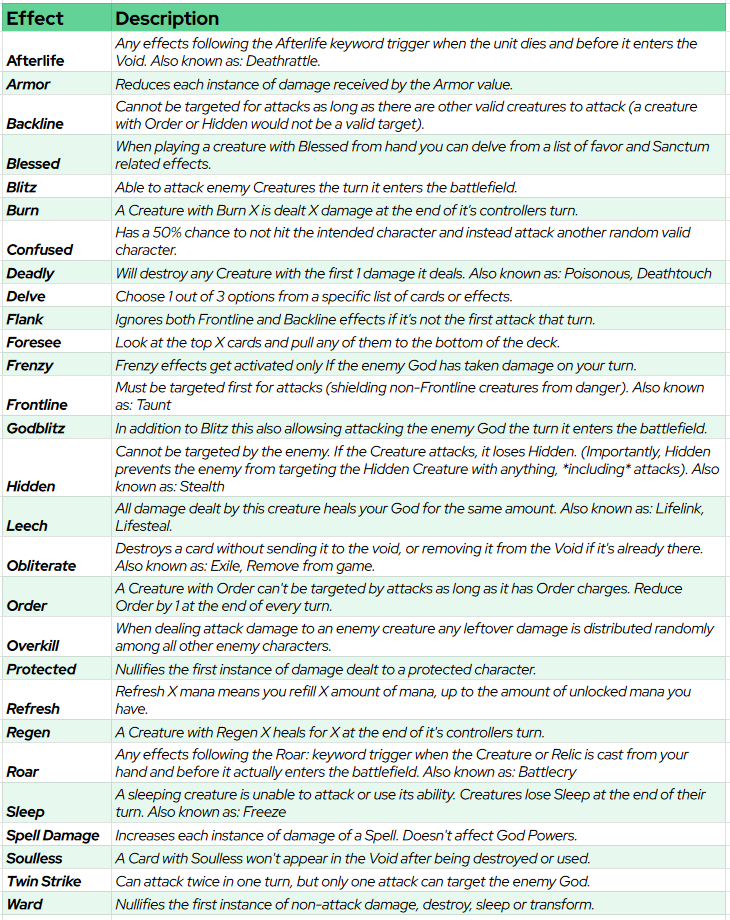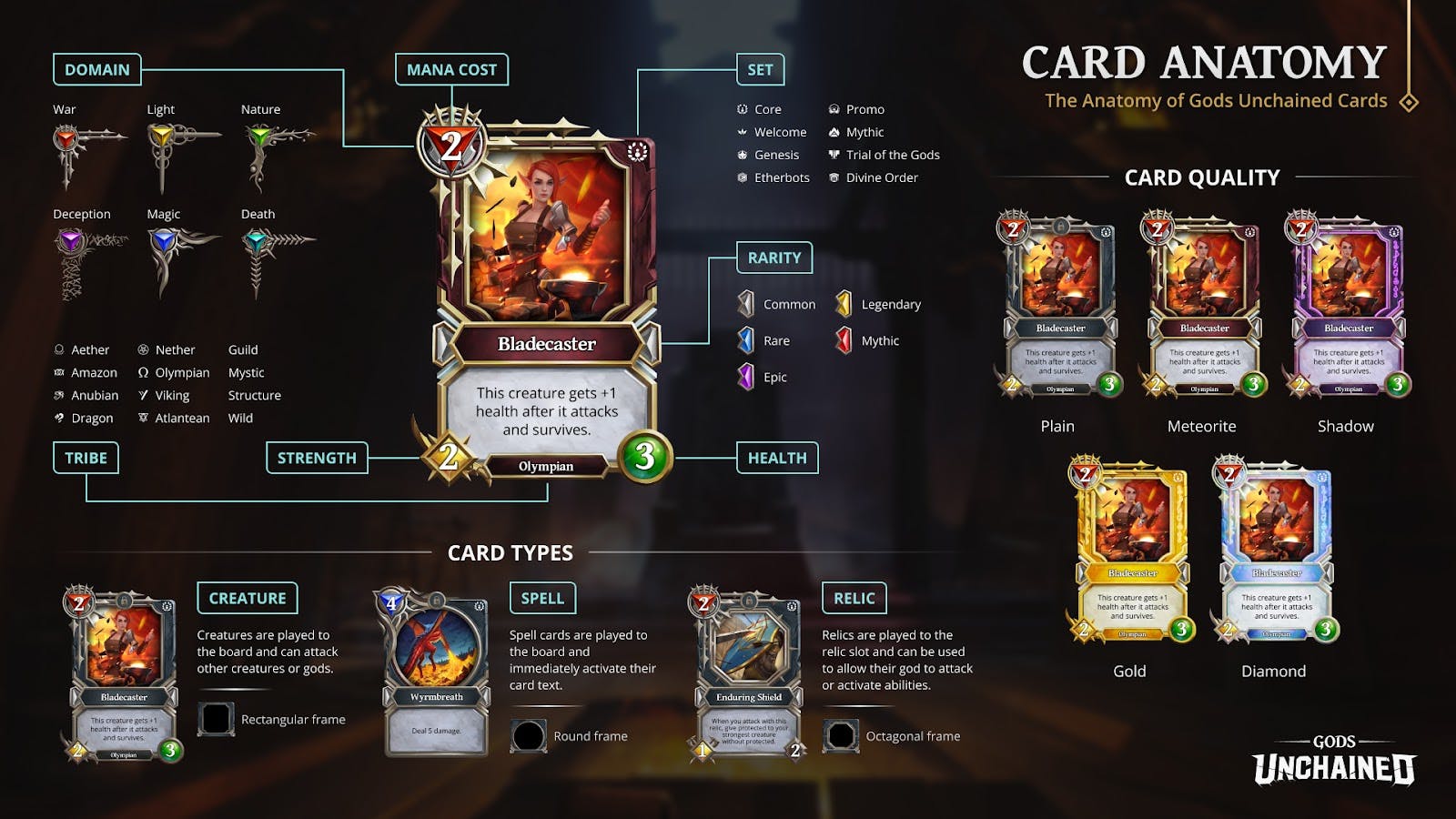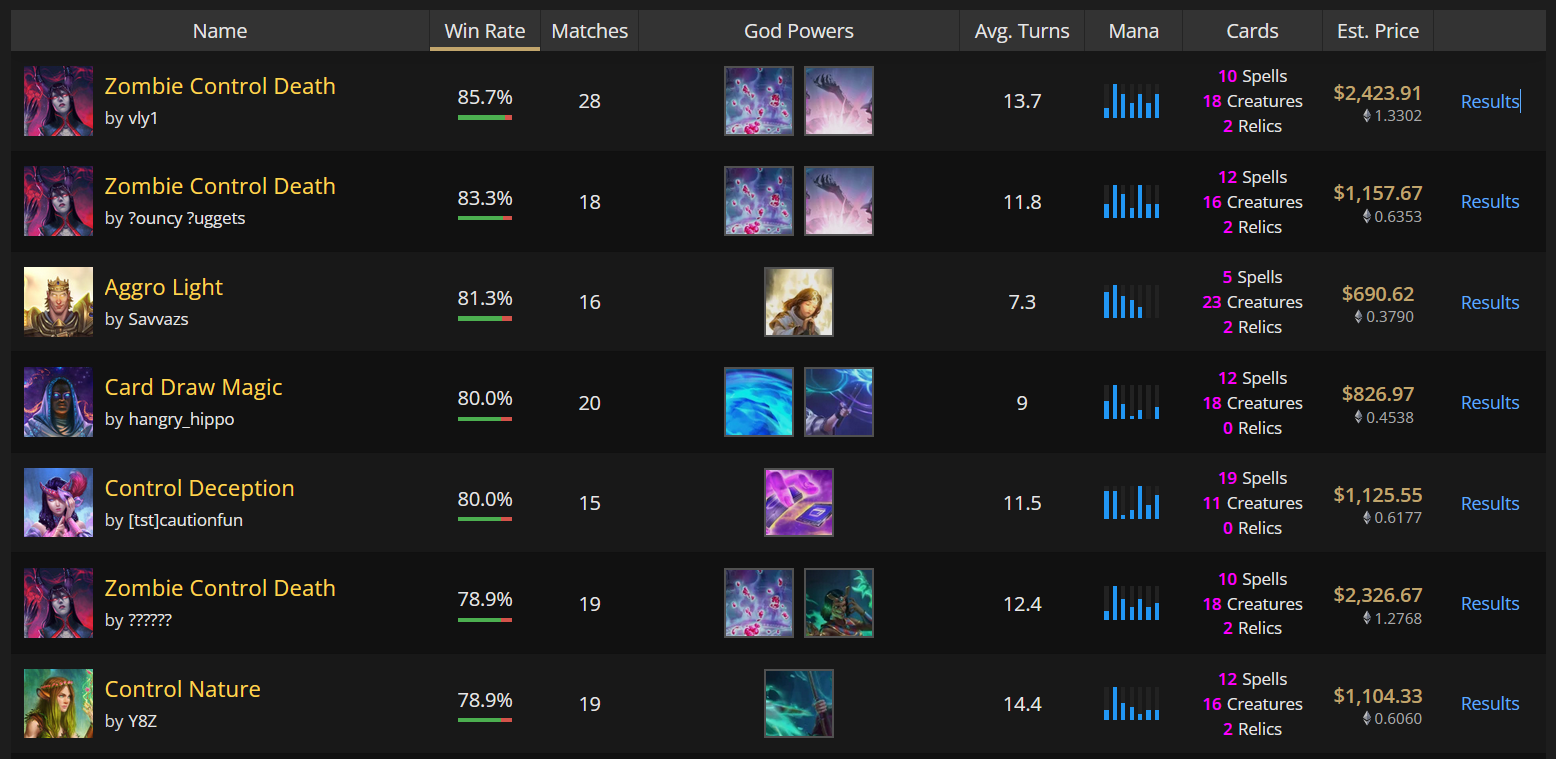How to play Gods Unchained
- Team 🥑
A BEGINNER'S GUIDE TO START PLAYING GODS UNCHAINED
In this forum post, we’ll provide some guidance on how to start playing Gods Unchained by giving beginner players a basic understanding of the game as we go through various card mechanics, different play styles & the deck building process.
The Premise of the Game
In the Gods Unchained game, players start with a Hero that aligns with six domains (War, Light, Nature, Deception, Magic, Death) and build a deck that aligns with the chosen domain. Both players start with 30 health points and work toward victory by bringing the opponent's Health to 0 points.
Learning the Ropes of the Game
Gods Unchained has a gradual learning curve for new players to learn the basics and start playing. New players can start by going through the tutorial missions in the Arena menu, which will give them a good understanding of the basic control and mechanics of the Gods Unchained game. Once they are familiar with the general mechanics and would like to venture out, they can duel with the computer AI in Solo Mode.
Gods Unchained players can use this opportunity to select decks for the computer AI in this game mode. This will come in handy for playtesting through a game. Players can set up the AI opponent with a chosen God & a meta deck that might be tough to beat while they test out their deck and improve it through dueling with the AI.
UNDERSTANDING CARDS & CARD MECHANICS
Fusing & Forging
Fusing Cards - Gods Unchained cards have different rarities and can go up in rank if a user chooses to fuse it via the Forge in the game. In Gods Unchained, fusing combines two or more existing identical cards into a singular higher-quality version of the original item. By doing so, when a card reaches Meteorite (or Higher) quality rarity, it can be traded on the Marketplace outside of the game.
Flux - Flux can be earned by playing the ranked constructed game mode. When used in conjunction with $GODS(Gods Unchained token), it can be used to merge identical cards into a new form.
Card Types
Cards in Gods Unchained come in three types: Creature, Spell & Relics
Creature - Allow players to attack other creatures or Gods Directly. In Gods Unchained, creature cards are subjected to Summoning Sickness (Can’t be used immediately) unless an effect or spell removes the summoning sickness
Spell - Spells are effect cards that can be activated immediately.
Relic - Relics equip gods with attack or effect abilities, allowing the Gods to attack.
During Gods Unchained play, players have the choice of playing around with the combination of either having more creatures in their deck, more spells in their deck, or even all spells/creatures. This depends on their preferred play style & selected God.
Card Attributes
The four main details of a card are - Mana Cost, Health, Strength, and Effect
Health: The amount of Health points that the card has. If it goes to 0, it is destroyed.
Strength: The amount of strength on a card that a player can attack in terms of damage.
Effect: The effect on the card when it is played into a battlefield.
Mana Cost: The Amount of Mana needed to summon a creature in Gods Unchained.
In Gods Unchained, players should have a mix of High or Low Mana cards. Low Mana for early-game strategies & High Mana for late game strategies
Gods Unchained players should be cautious and manage the Mana count effectively, as all players start with one mana up till Turn 5, 7 Mana on Turn 9, 8 Mana on Turn 12, 9 Mana on Turn 16.

Mana System Infographic (Source - Godsunchained.com)
Some Gods Unchained effects synergize with other effects to create unique and lethal combinations.

All effects & descriptions
Gods Unchained Players must consider all key details when building a deck for competitive play and understanding the different trade-offs between cards with low Mana cost but lower stats (Health & Strength). During play against the opponent, a player would need to calculate and forecast their strength & health and attack/defend the other opponent effectively while also considering the God type of the opponent.

Card Anatomy Overview (From Godsunchained.com)
PLAYSTYLES AND DECK-BUILDING
Playstyles - As God Unchained players start, they can familiarize themselves with the default readymade decks available on Gods Unchained. At the same time, they figure out their preferred God that matches their play style, each God having its unique play style based on the cards available.
In Gods Unchained, there are currently three basic playstyles - Aggression, Control Midrange & Combo
Playstyles for Different Domains
Aggression Play style: An aggression play style - Aggro for short, relies heavily on filling a player's hand with smaller Mana cost fast, dealing as much damage as they possibly can rapidly. But if a player chooses an Aggro deck and lets the game drag on longer than it should, they’ll run into the issue of having cards that are now suited for longer games (Stronger creatures that are more powerful).
Control Playstyle: A Control play style, as its name suggests, hinges on controlling the game by being efficient, with the deck built around the idea of removing an opponent's board aggressively and drawing the game out to then deploy stronger creatures/spells. But a control playstyle might run into issues if a player cannot effectively remove an opponent's board, causing them to take more damage and lose before they can deploy stronger creatures/spells.
Midrange Playstyle: A midrange play style involves using a mix of powerful creatures and spells. Players will have to adjust to the playstyles as the matches go along. A playstyle like this might be cost-intensive, as covering all bases with cards of a certain caliber might get expensive.
Combo Playstyle: A combo play style lengthens the game for the user to play out a combo(A set of moves that work in synergy with one another). The combo will allow the user to win the game if done well.
But combo playstyles run into the risk of not getting a good draw, especially since cards drawn by default are random, and players might not get to see their combos come to fruition.

Win-Rates of Different Playstyles (From Godsunchained.com)
WINNING STRATEGIES
In Gods Unchained, there is no definite recipe for success when it comes to deck-building. Deck building is only one-half of the equation. The other half involves players finding winning conditions that suit their play style. Players need to experiment and find the winning condition that they want to utilize to close out the game.
Board Control: This winning condition involves filling the board with as many low Mana creatures, all while applying a buff to them, allowing you to turn quantity into quality. The Board control play style will suit an Aggression deck, where creatures have a lower Mana count. This disrupts the opponents' play tremendously, as they can no longer be on the offensive and are stuck with clearing creatures on the board. All these while you get into a winning position to seal the game.
Late Game High Value: Involves using high Mana count cards that usually come in winning conditions to help close the game. But due to the higher Mana count, players might need more time to draw out the game to utilize these winning combinations.
Chained-Combos: Involves using a dual or triple combination set up to clear the opponent's board or finish the game. Certain cards have Battlecry abilities that allow the players to acquire more creatures in their deck or, in some cases, even summon another creature.
An example below would be using Leviathan Hunter(1 Mana cost), whose battlecry ability is to equip a relic, comboing that with Carnage sweep (5 Mana cost). With this combo, the player will effectively clear the entire board for 6 Mana, as Carnage Sweep destroys all creatures with any relic equipped.
CARD EVALUATING & CHOICES
In Gods Unchained when building a deck, players should have a good balance of Spells, Creatures, and relics from the selected God. With a larger weightage on Creatures, followed by 3-5 spells and 1-2 weapons. Creatures are important to maintain board control or disruption, and some spells are essential to increase a creature's power and regain board control. Relics are important for damage and combos.
Bearing all that in mind, choosing one card over another comes down to evaluating the card's “Vanilla value”
The Vanilla value assumes the card has no special abilities and is purely calculating if the stat combination of the card is balanced.
It can be calculated simply with the card’s Mana count = X
Formula - “(2*X +1) = Health + Strength”
E.g., a 4 Mana Card would need a Total health & strength of 9 & above to be considered a balanced card.
Using the Vanilla Value as a baseline, players can factor into cards with stronger abilities that will synergize their existing playstyle and gameplay.
COMBINATION
Taking into account the following in sequential order (God choice + Playstyle + Winning Conditions + Card Evaluation), a player could craft a deck that follows the player’s play style. But a player would get a higher win rate only through constant play testing and adapting to the rate of the current Meta.